
The Mallet locomotive is a type of articulated steam railway locomotive, invented by the Swiss engineer Anatole Mallet (1837–1919).
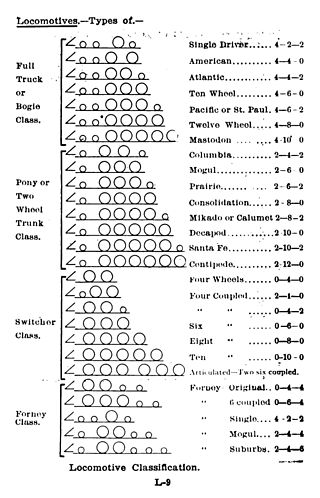
The Whyte notation is a classification method for steam locomotives, and some internal combustion locomotives and electric locomotives, by wheel arrangement. It was devised by Frederick Methvan Whyte, and came into use in the early twentieth century following a December 1900 editorial in American Engineer and Railroad Journal.

Under the Whyte notation for the classification of steam locomotives, a 2-10-4 locomotive has two leading wheels on one axle, usually in a Bissel truck, ten coupled driving wheels on five axles, and four trailing wheels on two axles, usually in a bogie. These were referred to as the Texas type in most of the United States, the Colorado type on the Burlington Route, and the Selkirk type in Canada.

A 2-8-8-4 steam locomotive, under the Whyte notation, has two leading wheels, two sets of eight driving wheels, and a four-wheel trailing truck. The type was generally named the Yellowstone, a name given it by the first owner, the Northern Pacific Railway, whose lines ran near Yellowstone National Park. Seventy-two Yellowstone-type locomotives were built for four U.S. railroads.
Under the Whyte notation for the classification of steam locomotive wheel arrangements, a 2-10-10-2 is a locomotive with two leading wheels, two sets of ten driving wheels, and a pair of trailing wheels.

In the Whyte notation for classifying the wheel arrangement of steam locomotives, an 0-8-8-0 is a locomotive with two sets of eight driving wheels and neither leading wheels nor trailing wheels. Two sets of driving wheels would give far too long a wheelbase to be mounted in a fixed locomotive frame, so all 0-8-8-0s have been articulated locomotives of the Mallet type, whether simple or compound. In the UIC classification, this arrangement would be, refined to Mallet locomotives, (D)D. The type was sometimes called Angus in North America.
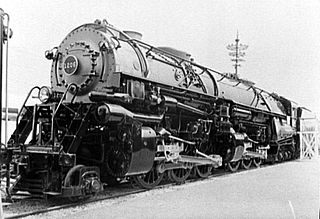
In the Whyte notation for the classification of steam locomotive wheel arrangement, a 2-6-6-4 is a locomotive with a two-wheel leading truck, two sets of six driving wheels, and a four-wheel trailing truck. All 2-6-6-4s are articulated locomotives, of the Mallet or related simple articulated type.

In the Whyte notation for the classification of steam locomotives by wheel arrangement, a 2-8-8-0 is a locomotive with a two-wheel leading truck, two sets of eight driving wheels, and no trailing truck. These were nicknamed "Bull Mooses".

Under the Whyte notation for the classification of steam locomotives, a 4-8-8-2 is a locomotive with four leading wheels, two sets of eight driving wheels, and a two-wheel trailing truck.
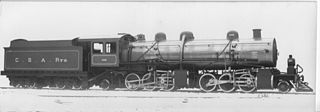
Under the Whyte notation for the classification of steam locomotives by wheel arrangement, a 2-6-6-2 is a locomotive with one pair of unpowered leading wheels, followed by two sets of three pairs of powered driving wheels and one pair of trailing wheels. The wheel arrangement was principally used on Mallet-type articulated locomotives, although some tank locomotive examples were also built. A Garratt locomotive with the same wheel arrangement is designated 2-6-0+0-6-2.

The 2-6-6-6 is an articulated locomotive type with two leading wheels, two sets of six driving wheels and six trailing wheels. Only two classes of the 2-6-6-6 type were built. One was the "Allegheny" class, built by the Lima Locomotive Works. The name comes from the locomotive's first service with the Chesapeake and Ohio Railway beginning in 1941, where it was used to haul loaded coal trains over the Allegheny Mountains. The other was the "Blue Ridge" class for the Virginian Railway. These were some of the most powerful reciprocating steam locomotives ever built, at 7,500 hp, and one of the heaviest at 386 tons for the locomotive itself plus 215 tons for the loaded tender.
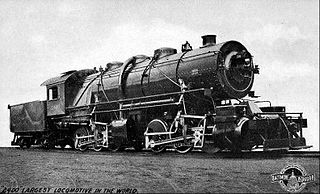
Under the Whyte notation for the classification of steam locomotives, a 0-6-6-0 wheel arrangement refers to a locomotive with two engine units mounted under a rigid locomotive frame, with the front engine unit pivoting and each engine unit with six coupled driving wheels without any leading or trailing wheels. The wheel arrangement was mostly used to describe Mallet locomotive types.
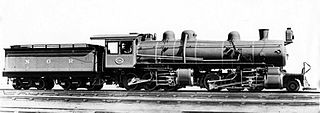
Under the Whyte notation for the classification of steam locomotives by wheel arrangement, 2-6-6-0 is a locomotive with one pair of unpowered leading wheels, followed by two sets of three pairs of powered driving wheels and no trailing wheels. The wheel arrangement was principally used on Mallet-type articulated locomotives. Some tank locomotive examples were also built, for which various suffixes to indicate the type of tank would be added to the wheel arrangement, for example 2-6-6-0T for an engine with side-tanks.
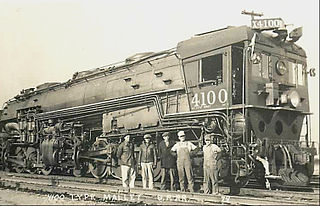
Southern Pacific Railroad's AC-4 class of steam locomotives was the first class of 4-8-8-2 cab forward locomotives. They were intended to improve on the railroad's MC (Mallet-Consolidation) class 2-8-8-2 locomotives with a larger firebox, hence, the four-wheel leading truck.

The New Zealand E class battery-electric locomotive represented the third unique type of locomotive class to be given the E classification in New Zealand. The first was the E class of nine Double Fairlie steam locomotives of 1872-75; the second E class consisted of a Mallet compound made in 1906; and as both were no longer operated by the New Zealand Railways in 1923, the classification was free to be used for a third time when the small battery-electric locomotive was delivered. This is the only time a classification has been used three times in New Zealand, though re-use happened a number of other times, arguably most notably when the A class of 1906 took the designation originally used by the A class of 1873.

The Norfolk and Western class J was a class of fourteen 4-8-4 "Northern" streamlined steam locomotives built by the Norfolk and Western Railway (N&W) at its Roanoke Shops in Roanoke, Virginia, from 1941 to 1950. They were operated in revenue service until the late 1950s.
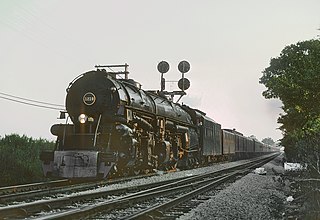
Norfolk and Western 1218 is a preserved four-cylinder simple articulated 2-6-6-4 steam locomotive, built in June 1943 by the Norfolk and Western's (N&W) East End Shops in Roanoke, Virginia as part of the N&W's class "A" fleet of fast freight locomotives. It was retired from regular revenue service in July 1959, and was later restored by Norfolk Southern for excursion service for their steam program, pulling excursions throughout the eastern United States from 1987 to 1991. It is currently on display at the Virginia Museum of Transportation in Roanoke, Virginia.

Norfolk & Western 2156 is a four-cylinder compound articulated class "Y6a" "Mallet" type steam locomotive with a 2-8-8-2 wheel arrangement. The Norfolk & Western Railway built it in 1942 at its Roanoke Shops in Roanoke, Virginia as a member of the N&W's Y6a class. It is the strongest-pulling extant steam locomotive in the world, although it is not operational. It was retired from regular rail service in July 1959 and is now owned by the National Museum of Transportation in St. Louis, Missouri.

Norfolk and Western 611, also known as the "Spirit of Roanoke" and the "Queen of Steam", is a Norfolk and Western (N&W) class J 4-8-4 "Northern" streamlined steam locomotive built in May 1950 by the N&W's East End Shops in Roanoke, Virginia. It was one of the last mainline passenger steam locomotives built in the United States and represents the pinnacle of steam locomotive technology.

The Chesapeake and Ohio H-8 was a class of 60 2-6-6-6 steam locomotives built by the Lima Locomotive Works in Lima, Ohio between 1941 and 1948, operating until the mid 1950s. The locomotives were among the most powerful steam locomotives ever built and hauled fast, heavy freight trains for the railroad. Only two were preserved; Nos. 1601 and 1604.


















